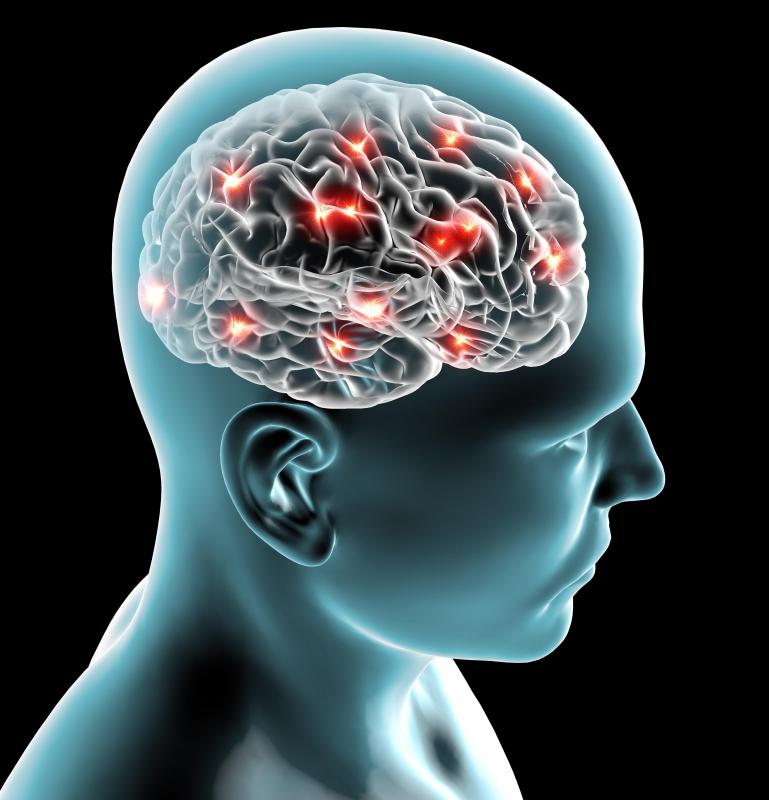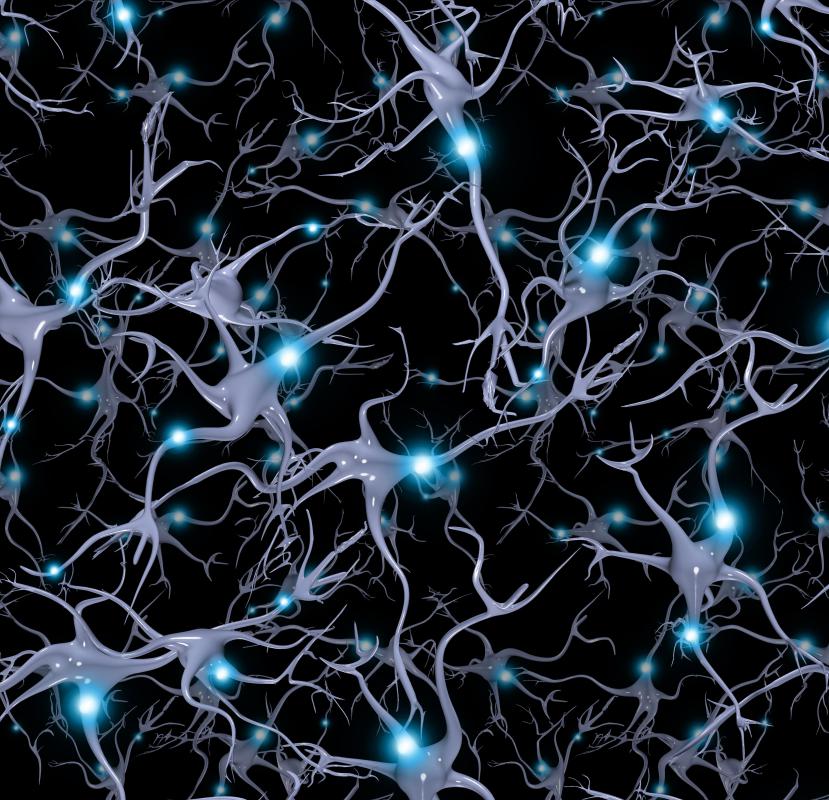At TheHealthBoard, we're committed to delivering accurate, trustworthy information. Our expert-authored content is rigorously fact-checked and sourced from credible authorities. Discover how we uphold the highest standards in providing you with reliable knowledge.
What Is Axon Collateral?
Most neurons have multiple projections, or processes, that sprout from the cell body, or soma, called "neurites." Neurons have many processes, most of which are dendrites, but most neurons also have a single, unique process called an axon. Dendrites are the processes that receive signals from afferent projections of other cells, while axons are the projecting neurites, sending signals to other cells, even in distant areas of the brain or spinal cord. Axons bifurcate and can send a branch back toward its own cell's soma. These projections are known as "axon collaterals."
While a neuron has only one axon, it is common for this single process to bifurcate at multiple points along its length. An axon has a main projection, the terminal location, which determines where that cell "projects" to, and it has branches. One of the branches that bifurcates off the primary axon is the axon collateral, and it projects back toward the cell itself.

At the terminal of an axon there are "boutons" that form synapses with other cells, often on the dendritic processes of those receiving cells. There are also synapses that form along the length of the axon. In the cases of myelinated processes, synapses only form at the breaks in the myelin called "Nodes of Ranvier."
An axon collateral is often associated with feedback mechanisms that help a cell regulate its own firing pattern. Since this collateral will project back toward the cell that the axon is attached to, it can easily form synapses with the cell itself, or other, nearby cells. In the case of pyramidal, excitatory cells — common information-integration cells in the mammalian brain — are often near inhibitory interneurons. As an axon collateral can form synapses with these nearby inhibitory neurons, it serves as a regulation system. Excitatory cells excite nearby inhibitory cells that prevent them from firing quite as often.

Axon collaterals bifurcate from primary axon segments at unmyelinated regions. This makes sense because myelin functions as a neural wrap when an oligodendrocyte sends a process repeatedly around an axonal process of another cell. A single oligodendrocytic process, however, would have a difficult time wrapping around three segments joining at a single point, which is what happens when axon segments form branches.

Some scientists believe this type of collateral is a cellular preservation mechanism more than a mechanism tailored to encode firing patterns and regulate signaling information through neural pathways. This is because some excitatory cells are at risk for a toxicity response with too much activity. If an excitatory cell were to fire and the axon collateral stimulated the same cell again, a firing cascade would occur that self-propagates, causing a phenomenon known as "excito-toxicity."
AS FEATURED ON:
AS FEATURED ON:














Discussion Comments
A concussion is a type of nerve damage. The brain is housed with many nerves and a concussion can cause mixed nerve signals in the brain.
A concussion can cause a number of physical, emotional or cognitive issues, whether visible or not.
Treatment involves rest and monitoring. Reduction of activities that stress the brain into too much use. Healing generally takes three weeks but further tests may be needed if symptoms linger.
Post your comments